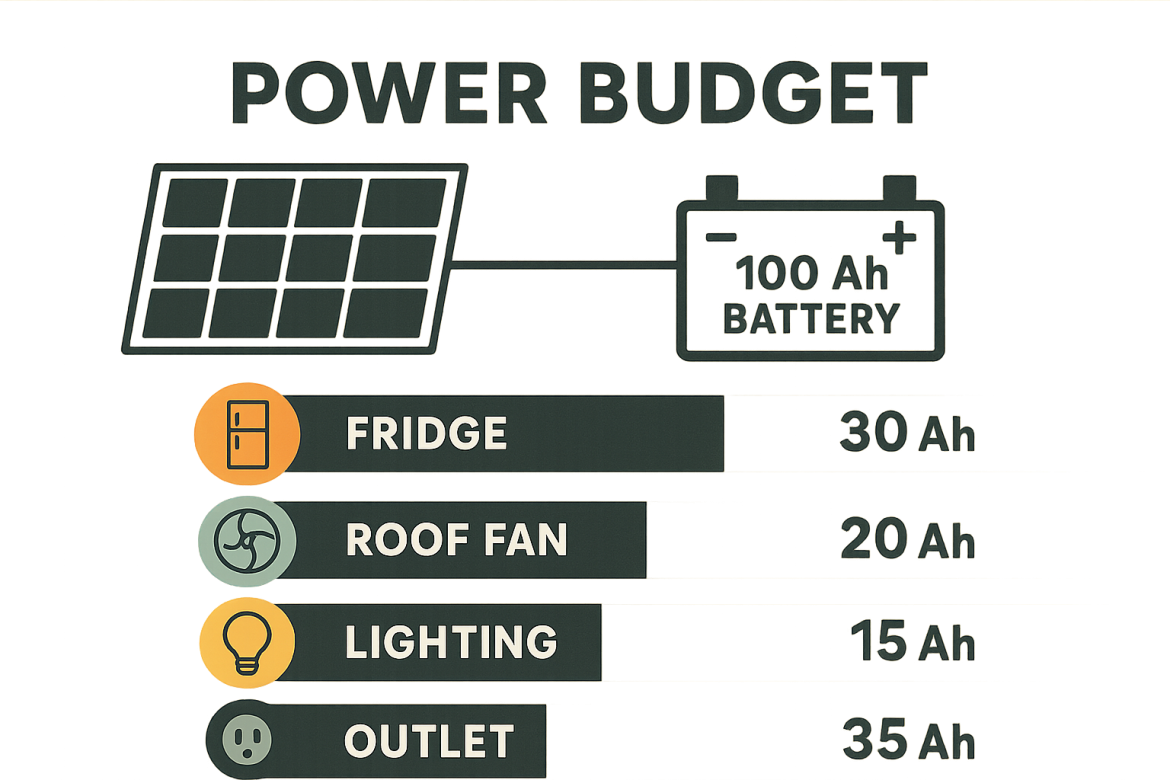19
List every device you use in a day, total the watt-hours, then size your batteries, solar, and charging around that number. It’s the simplest path to a stress-free off-grid setup.
Why this matters
Guessing at “enough power” leads to dead batteries and noisy generators. A quick daily budget makes everything—from battery size to panel count—obvious.
The simple math
- List devices (lights, fridge, fans, inverter loads, laptops, Starlink, pump).
- Find watts (device label) and estimate hours used per day.
- Watt-hours/day = watts × hours. Add them up.
- Battery size (Ah) ≈ total Wh ÷ system volts ÷ allowed depth-of-discharge
- Example (12V LiFePO₄ @ 90% usable): 1,200 Wh ÷ 12V ÷ 0.9 ≈ 111 Ah.
- Solar target: Plan to harvest ~1.3–1.8× your daily use to cover cloudy days and losses.
Field note
We ran a quiet camp with a 12V fridge, lights, two laptops, and Starlink. Daily draw ~1,300 Wh. With 400W of roof solar plus occasional alternator top-offs, batteries stayed >60% even after a gray day.
Optimization tips
- LEDs everywhere. Huge savings.
- Right-size inverter. A 2,000W unit idling all day wastes power; turn it off when not in use.
- DC when possible. 12V chargers for laptops/routers beat inverter losses.
- Timers on Starlink/routers to auto-sleep overnight.
Product spotlights:
- Inline power meters (plug-in) to measure AC device draw.
- Victron SmartShunt or BMV-712 for accurate state-of-charge (SOC).
- Foldable 100–200W panels for shoulder seasons and shady camps.



